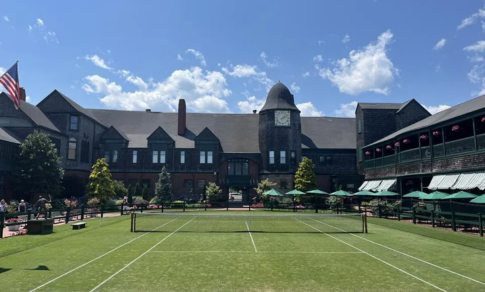The "Hall of Fame" tournament in Newport, Rhode Island, though not a Grand Slam, is a significant fixture in American tennis with a 150-year tradition. This summer event has consistently drawn crowds and gained prestige, offering a delightful follow-up for players after their Wimbledon stint, as they transition from London to the East Coast. In two weeks, it will embark on its final journey, marking the end of another era for grass court tournaments on the professional circuit.
From a broader perspective, this change represents a move to open new markets and streamline the annual schedule for players, driven largely by the financial investments from Saudi Arabia and Qatar. Their contributions are set to elevate their tournaments at the expense of existing competitions. Despite these changes, the grass season remains notably short, and with the discontinuation of the Newport tournament, only seven grass court events will remain for both men and women in 2025.
The New York Times highlighted this shift, noting that of the 70 annual men's tournaments this year, 40 are on hard courts, 22 on clay, and only eight on grass. For women, the numbers are 36 on hard courts, 13 on clay, and seven on grass. Lower-ranked players seldom get to play on grass, making the surface increasingly rare.
Wimbledon, however, remains untouchable—the most prestigious tournament opening today. As long as professional tennis exists, Wimbledon will continue to be a symbol of grass court play, despite the dwindling number of such events. Few remember that the Australian and US championships were once played on grass.
The challenge lies in the high level of professionalism and investment required for grass courts. The world's top player, Iga Swiatek, exemplifies these difficulties, often struggling with the brief grass season and limited preparation time. At 23, with five Grand Slam titles, she has never advanced past the Wimbledon quarterfinals.
Grass court maintenance is an art and a significant investment. It requires year-round work to present the best playing conditions, making it costly and often unprofitable given the short grass season. Nonetheless, Wimbledon stands apart, a tournament no player wants to miss. Andy Murray, recovering from back surgery, and Novak Djokovic, post-knee surgery, made efforts to compete. Rising stars like Carlos Alcaraz and Yannick Sinner, influenced by Roger Federer, showcase their adaptability on grass, while Naomi Osaka returns to Wimbledon after a five-year hiatus. Industry leaders might prefer to avoid the complexities of the grass season, but for players and fans alike, Wimbledon remains a cherished tradition that endures despite the challenges.








ADD A COMMENT :